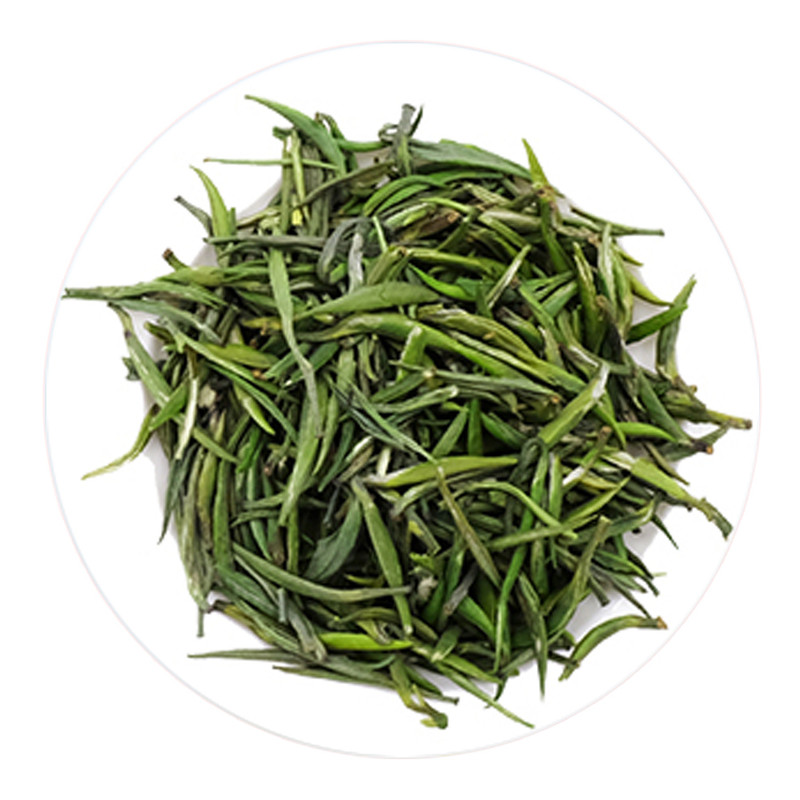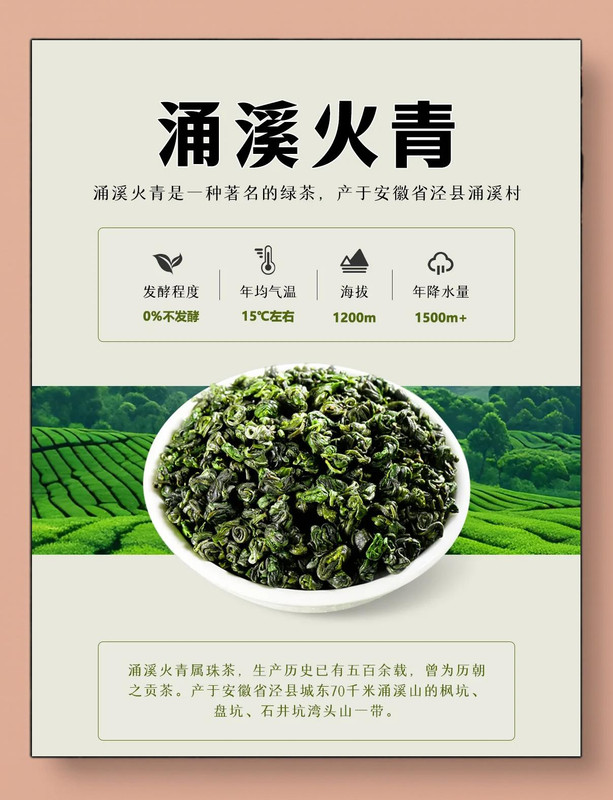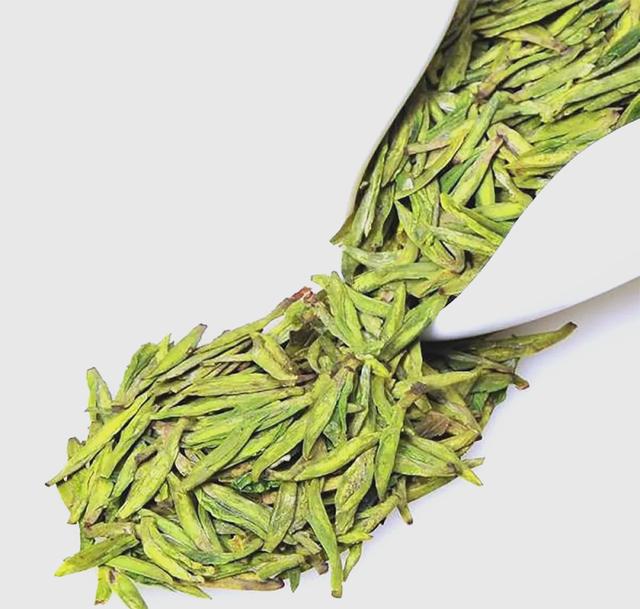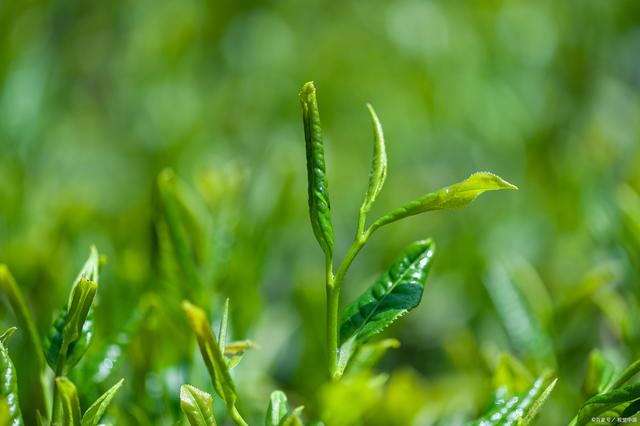Nestled in the mist-clad slopes of Qishan Mountain in Anhui Province, 齐山翠眉 (Qishan Cuimei) has captivated tea enthusiasts for centuries with its delicate, needle-like shape and orchid-like fragrance. This historic green tea, named for its resemblance to a maiden’s slender eyebrow, embodies the harmony of nature and craftsmanship.

Origins & Cultural Tapestry
Qishan Cuimei’s story begins in the Tang Dynasty, when monks and scholars frequenting Qishan Mountain—a cultural sanctuary near Chizhou City—noticed the exceptional quality of wild tea bushes thriving in the region’s cloud forests. By the Ming Dynasty, it became a favorite of the imperial court, praised for its “jade-like hue and lingering sweetness.” Though it nearly vanished during the late Qing, a 1980s revival project by Anhui’s tea researchers restored this gem to its former glory. Today, it stands as a testament to China’s rich tea heritage.
Terroir: Where Mist Meets Mineral-Rich Soil
The tea grows in a microclimate shaped by Qishan Mountain’s 800-meter elevation, where:
- Climate: Annual rainfall exceeds 1,400mm, with fog enveloping the slopes 180 days a year. Spring temperatures hover between 10–20°C, ideal for slow bud development.
- Soil: Reddish-brown, acidic loam enriched by decaying vegetation and granite particles, imbuing the tea with a mineral undertone.
- Cultivars: The local “Qishan Dabaicha” variety, prized for its thick, downy buds, forms the tea’s backbone.
Craftsmanship: From Leaf to Legend
Plucked from mid-March to early April, only the youngest bud and one adjacent leaf are harvested. The three-step processing includes:
- Pan-Frying (杀青): Leaves are tossed in iron woks at 130–140°C to halt oxidation, preserving their emerald freshness.
- Shaping (做形): Artisans use finger pressure to roll the leaves into slender, curved strips, resembling eyebrows.
- Baking (烘干): A two-stage drying process—first at 110°C to fix shape, then at 60°C to enhance fragrance—yields a moisture content below 5%.
Aesthetic & Sensory Journey
- Dry Leaf: Slender, jade-green strips with silver trichomes, resembling a maiden’s eyebrow.
- Infusion: Brewed at 80°C, the liquor transforms into a pale jade, with leaves unfurling like blooming orchids.
- Aroma: Dominant notes of fresh bamboo and chestnut, with a lingering sweetness.
- Mouthfeel: Light-bodied with a brisk astringency that mellows into a honeyed aftertaste, leaving a refreshing coolness in the throat.
Grading & Value
Qishan Cuimei is classified into three grades:
- Special Grade (特级): Uniform strips, dense silver down, priced at ¥800–¥1,200/500g.
- Grades 1–2: Include slightly larger leaves, with prices ranging from ¥300–¥600/500g.
Spring harvests command premiums, while autumn batches offer budget-friendly options.
Brewing Rituals
To honor its complexity:
- Teaware: Use glass or white porcelain to admire the “eyebrow” unfurling.
- Ratio: 3g tea to 150ml water (1:50 ratio).
- Infusions:
- First steep: 1 minute (awakens the leaves).
- Subsequent steeps: Add 30 seconds per infusion (up to 4 times).
Authenticity & Health
Counterfeits often lack the tea’s signature “eyebrow” shape and orchid aroma. Genuine Qishan Cuimei:
- Visual Check: Leaves should be uniformly green with silver tips.
- Cold Brew Test: Steep 1g in 50ml cold water; authentic leaves sink gradually, releasing a sweet aroma.
Beyond its cultural cachet, the tea offers:
- Antioxidant Power: Rich in EGCG, it combats free radicals linked to aging and cancer.
- Metabolic Boost: Caffeine and L-theanine synergize to enhance focus without jitters.
- Digestive Aid: Traditionally used to alleviate bloating after heavy meals.
Legacy & Modernity
Qishan Cuimei’s revival in the 1980s merged ancient wisdom with modern hygiene standards. Today, artisans experiment with floral infusions—jasmine or osmanthus—while preserving the classic “emerald eyebrow” aesthetic. As a UNESCO-recognized cultural heritage product, it remains a bridge between China’s past and its dynamic tea scene.
From imperial courts to contemporary teacups, 齐山翠眉 endures as a testament to Anhui’s terroir—a living poem written in jade and mist.



